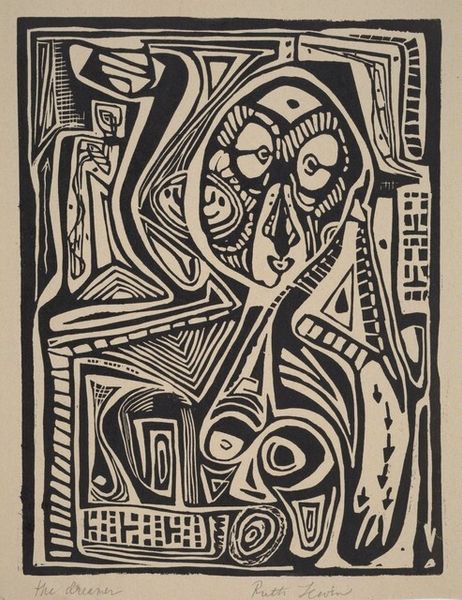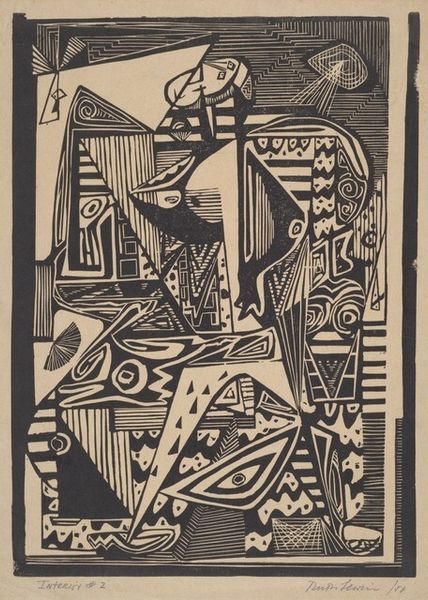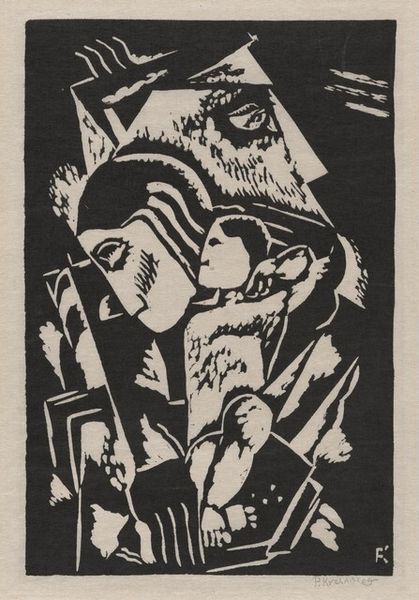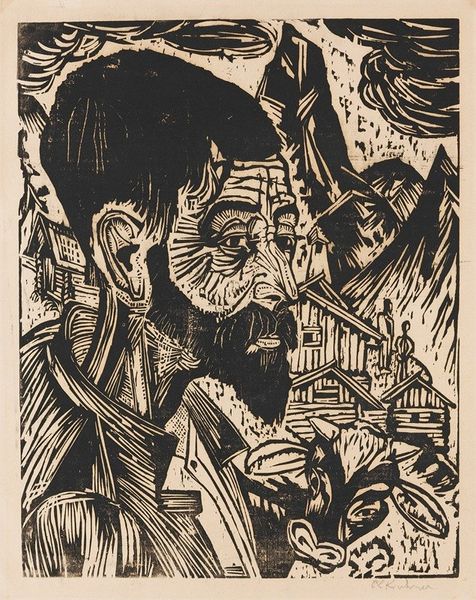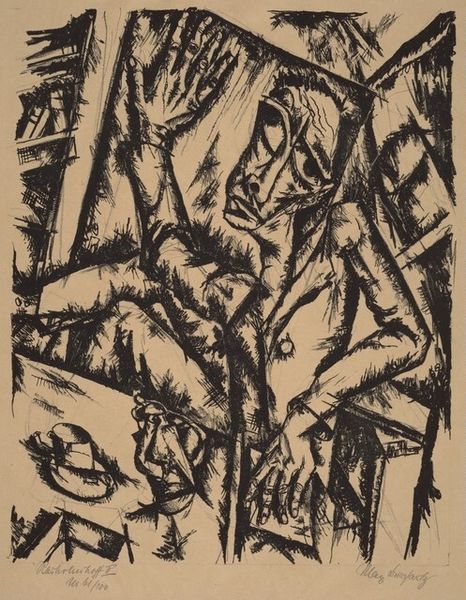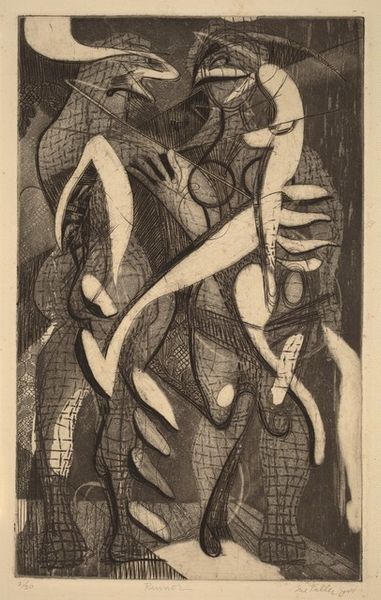
print, woodcut
#
narrative-art
# print
#
german-expressionism
#
figuration
#
expressionism
#
woodcut
Copyright: National Gallery of Art: CC0 1.0
Editor: This woodcut is "The Expulsion" by Hilda Katz. I'm really struck by how chaotic it feels. The sharp, jagged lines create a sense of unease. How do you interpret this work from a formalist perspective? Curator: The piece’s visual organization offers a fascinating entry point. Consider the stark contrast between the black and white spaces. Notice how Katz uses these contrasts not merely to depict form, but to generate a dynamic interplay of positive and negative space. The composition shatters the picture plane into fragmented elements, destabilizing any conventional sense of depth. Editor: So the emotional impact comes from this disruption? Curator: Precisely. Note how the harsh lines and abstract forms of the angels differ radically from the small figures in the lower right. How does this disparity affect the narrative reading? Editor: It makes them seem incredibly vulnerable, overpowered by the unnatural elements of the landscape and the angels above. Curator: And what does that say about the symbolic potential of a landscape expressed in such distorted forms? Does it reflect an inner psychological state as much as an outer environment? Editor: I see what you mean. It’s like the chaos of their internal experience is externalized through the visual language of the woodcut. It's more than just illustrating a story; the medium and composition become the message. Curator: Indeed. Through the rigorous analysis of form and composition, the artist creates an experience for the viewer.
Comments
No comments
Be the first to comment and join the conversation on the ultimate creative platform.
